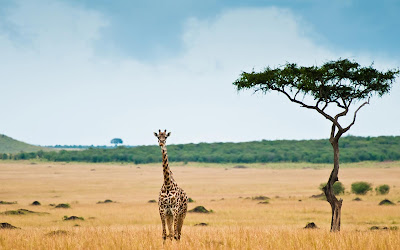Jakarta, Indonesia - A new report released by WWF to commemorate
the Heart of Borneo (HoB) Declaration’s 5th anniversary shines a
positive light on the environmental status of this iconic 220,000 km2
landscape.
The Heart of Borneo Declaration, signed five years ago on February 12,
2007, committed the governments of Brunei Darussalam, Indonesia and
Malaysia to the conserve and sustainably develop the 22 million hectare
‘Heart of Borneo’.
However until now, there was no baseline data from which to assess the
environmental status of the region or monitor changes over time. That
is about to change with a new report produced in consultation with a
wide range of specialists and scientists who have been working on Borneo
ecology for many years.
The new report:
The Environmental Status of the Heart of Borneo,
analyses the environmental health of the area via 13 key targets and
more than 50 indicators. The targets include endangered animal species,
such as the orang-utans, rhino and pygmy elephant and a selection of
ecosystems such as lowland, heath and montane forests and river systems.
Each key target has been given a rating of very good, good, fair or
poor – depending on its current quality within the Heart of Borneo
(HoB).
The good news
The good news overall, is that most forest types in the HoB are
currently rated as good or very good. This is particularly important for
lowland forest which is under severe threat across the rest of the
island of Borneo. In fact, given that lowland forest is prime habitat
for Pygmy elephant, orang-utan and Rhino, the HoB may be the last
stronghold for the preservation of this type of forest on Borneo.
The bad news
The bad news is that the HoB still remains under serious threat from
industrial conversion of natural forest to palm oil and other
agricultural crops, as well as illegal logging and unsustainable rates
of legal timber extraction. Forest fire, mining and over hunting of
wildlife are also major threats which future versions of this report
will serve to monitor.
The report was released by WWF’s Heart of Borneo Initiative. Its team
leader, Adam Tomasek, highlighted the significance of the report.
“For the first time the environmental health of the HoB has been
assessed using a series of scientifically derived biological and
ecosystem indicators and the results have indicated the HoB is currently
in good health,” he said.
“Just as importantly, now for the first time, the three HoB governments
and key stakeholders will have a credible and easy to use tool to
monitor progress in terms of improvements or degradation in key natural
health measures for the HoB. It is a management tool which can be used
to improve decision making on the sustainable use and conservation of
this globally iconic landscape,” he said.
WWF encourages the three governments of Borneo to use the report to
raise awareness of the high conservation values of the HoB and the major
threats to its continued survival as an area of globally significant
biodiversity.









